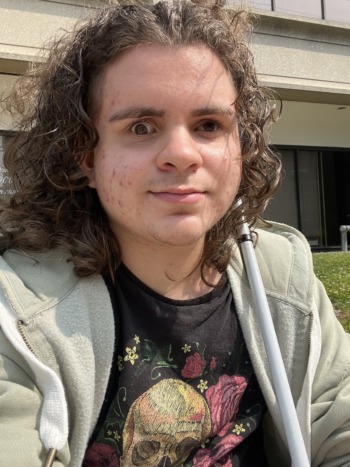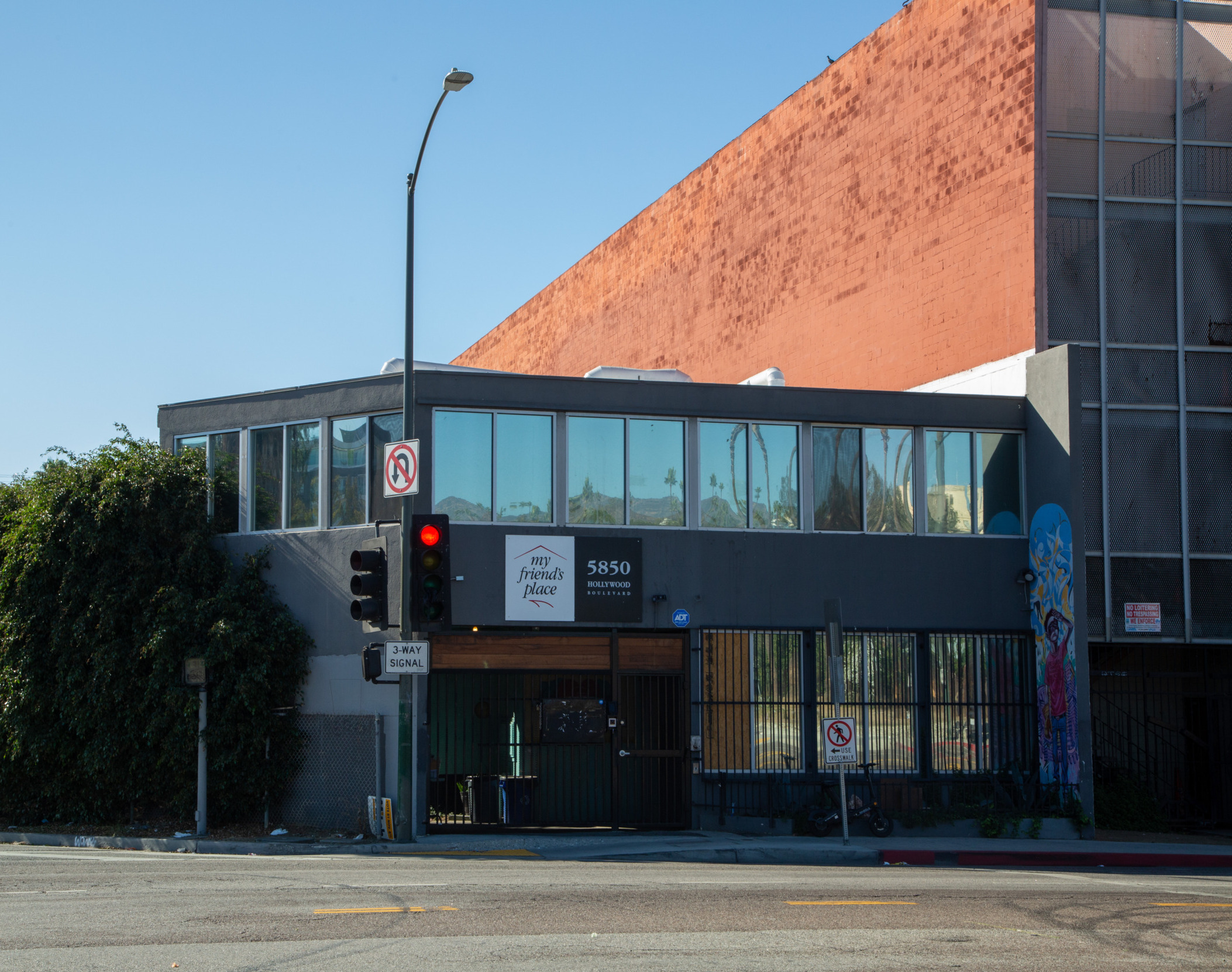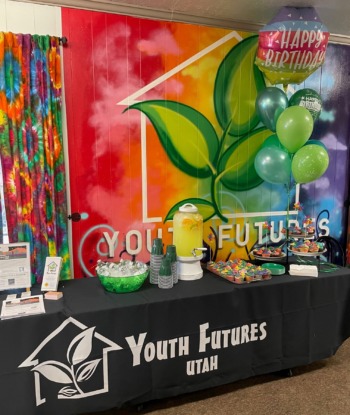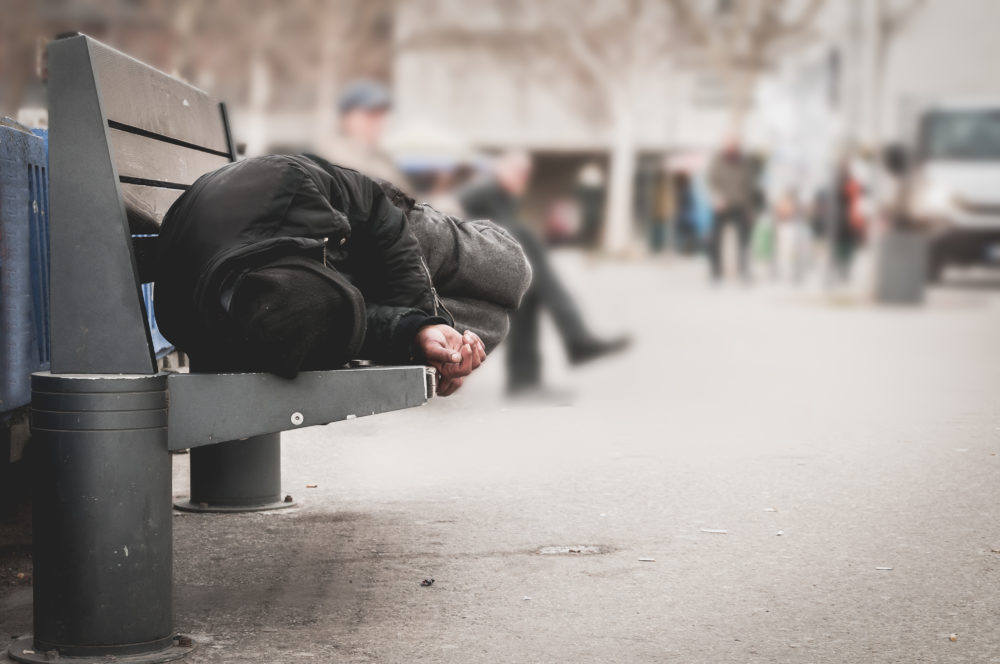There are years of E.J. Valez’s life that he barely remembers because he’s blocked them out. He came out to his family as queer in second grade and then as trans in high school. His mother didn’t take it well. “She did not want that for me,” Valez said. “She wanted her pretty little princess back.”

Courtesy of E.J. Valez
E.J. Valez
At 17, after years of rejection and heartbreak, his family abandoned him, forcing him into homelessness. Valez, now 22, said the years of struggle that got him to where he is today — where he slept and how he ate — are a blur. “When something traumatic happens, your brain tries to block out the most negative of the emotions,” he said. “It tries to protect you as much as it can. That isolation breaks you, and that fight or flight puts you in complete fear. I’m still trying to heal.”
What Valez does vividly recall is when he was connected with Family Promise, a nationwide nonprofit that operates a facility for marginally housed families in Berks County, Pennsylvania, where he lives. When he was 18, Family Promise helped him sign the lease on his first apartment, and their drop-in center offered a space where he could do laundry and get free Wawa sandwiches. He said staff often went out of their way to make trans people feel welcome. When a client needed to get to their top surgery appointment, a staff member drove them and waited four hours to take them back.
“You’re able to just go somewhere and cry and scream and not be judged,” Valez said of Family Promise. “It’s a safe place.”
But for the disproportionate number of youth experiencing homelessness across the U.S. who are LGBTQ, finding spaces that are truly affirming can be extremely difficult. Very few areas of the country have comprehensive protections to ensure that LGBTQ young people aren’t targeted for discrimination or harassment while seeking shelter. Just six states boast passing scores on the State Index on Youth Homelessness, a project of True Colors United and the National Homelessness Law Center: California, Connecticut, Louisiana, Maine, Massachusetts, and Washington. Seventeen states — including Georgia, Michigan, Ohio, Utah, and Virginia — rate as “critically low.” Arkansas and North Dakota tied for the lowest score.
The patchwork of protections for LGBTQ youth experiencing homelessness leave them extremely vulnerable to mistreatment or discrimination, according to advocacy groups. Twenty-three states currently have banned anti-LGBTQ bias in the buying, selling or renting of properties, according to the non-partisan think tank Movement Advancement Project, but these policies rarely include explicit protections for those seeking temporary or emergency shelter.
Although the Department of Housing and Urban Development has interpreted prohibitions against sex discrimination in the Fair Housing Act as also pertaining to LGBTQ identities, what constitutes a “dwelling” under federal law has long been left undefined. According to a report from the National Housing Law Project, courts have found the FHA covers housing units like nursing homes, student housing, and shared residences for migrant workers, but the legal system has yet to determine whether homeless shelters are included.
Failing to meet the needs of LGBTQ+ youth
Without robust protections in place, advocates said that many LGBTQ youth are falling through the cracks in the system. In 2015, Sandra Whitley founded San Antonio’s Thrive Youth Center, an emergency shelter for queer and trans youth, because there were no organizations in Texas that were dedicated to LGBTQ homelessness, as far as she was aware. Today, Thrive Youth Center offers a 13-bed shelter, mental health services, street outreach, and a rapid rehousing program that each year places about 45 young adults into rental apartment units.
But even today, Whitley said, Texas only has “a couple” shelters with specific housing for LGBTQ youth, and many of Thrive Youth Center’s clients avoid going to other shelters out of fear of rejection and abuse.
“When we first opened, those youth had been on the street for five years, six years,” she said. “That’s difficult, the additional trauma they have to experience, not to mention maybe legal problems if they got caught stealing food or trespassing to find a safe place to sleep. Within 48 hours, you’re almost guaranteed to have to break the law in order to survive.”
While Texas ranks in the bottom half of scorers on the State Index on Youth Homelessness, even youth in states with seemingly robust LGBTQ protections are not immune to mistreatment in homeless services.

Courtesy of My Friend's Place
My Friend’s Place in Los Angeles, California.
Erin Casey is the director of programs at My Friend’s Place, a shelter based in Los Angeles that offers creative programming for youth, including a recording studio, an artists-in-residence program, and a writing workshop that produces a monthly zine. She said a young gay couple recently reported being “ridiculed by staff for holding hands” at another shelter in California.
“Almost every trans person that we work with would have a story of being intentionally misgendered or [of shelters] not being culturally competent at all, not asking pronouns or considering gender identity or expression,” Casey said. “Oftentimes a shelter will require you to show your legal identification. A lot of young people haven’t yet had the opportunity to go through the process of name change or having their gender changed on their ID.”
A “protection gap” for homeless LGBTQ+ youth
Advocates say these myriad factors result in a “protection gap” that often leaves homeless LGBTQ youth at risk. Darla Bardine, executive director for the National Network for Youth, said that grant funding through the national Runaway and Homeless Youth Act mandates some protections for marginally housed LGBTQ young people, but not all shelters are federally funded. At the state level, the vast majority of funding for homelessness is earmarked for adults. That makes it harder for states to enforce protections because they can’t pull resources from shelters that don’t abide by the rules.
Laws on homelessness remain widely outdated and often fail to recognize the lived realities of an extremely diverse population, Bardine added. For instance, only 11 states allocate specific funding for any youth experiencing homelessness, LGBTQ or not. “Most of the time there isn’t housing available,” she said, “and if there is, it isn’t funded through the state.”
Some states, however, are making strides toward better meeting the needs of unhoused LGBTQ youth. Kristen Mitchell, the co-founder of Utah’s Youth Futures, said the state’s updated 2022 licensing requirements mandate that all shelters draft guidelines detailing what they are doing to prevent discrimination in their facilities. “To meet the new regulations, it took me 13 revisions,” Mitchell said. “It had to be very detailed. We’ve always been non-discriminatory. We’ve always accepted anyone and everyone, no matter what, but maybe other people do discriminate.”

Courtesy of Youth Futures Utah
Promotional tabling at the grand opening of the Ogden, Utah Youth Futures shelter.
Young Futures operates three drop-in spaces and overnight shelter for at-risk youth between the ages of 12 and 18, but Mitchell said the requirements don’t just apply to nonprofits that address homelessness. All residential treatment facilities in the state — from domestic violence centers to rehabilitation clinics — are obligated to comply with the regulations, which prohibit all forms of discrimination and harassment on the basis of both sexual orientation and gender identity.
States across the county must do what it takes to ensure LGBTQ youth are able to access shelter spaces, advocates say, because these resources can make a profound and overwhelming difference in their lives. For Valez, signing the transitional housing lease that Family Promise set him up with was a major step toward ending the cycle of trauma that had dominated his teenage years. “Walking into that apartment, I was scared,” he said. “I didn’t know what to do. I was hungry. I was tired. I didn’t have food. But it became home.”
Today, Valez is in college and enrolled in an accelerated program in applied psychology and behavior analysis. When he graduates, he hopes to support youth who have survived the same kinds of experiences that he did.
“It’s a scary time because no one truly knows what you’re going through,” he said. “You’re struggling with your own identity because everyone has disowned you. When you truly have no one to fall back on and there are no real protections, where do you go?”
***
Nico Lang is a Los Angeles-based journalist who covers the fight for LGBTQ+ equality.
































